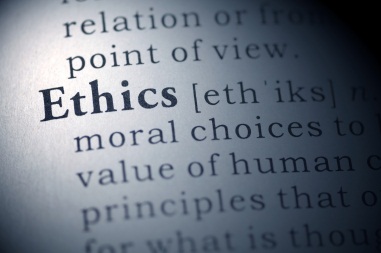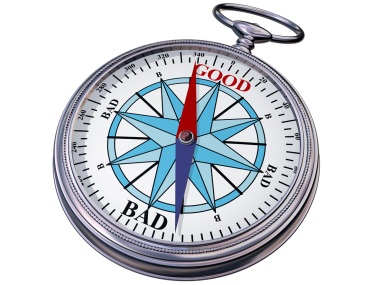With the first faint rays piercing the economic gloom after five years there is anecdotal evidence that things are beginning to warm up for lighting design. The British Chambers of Commerce released an optimistic Quarterly Economic Survey recently, suitably hedged with warnings not to get cocky – manufacturing and services are growing at pre credit-crunch levels but investment is weak in both sectors and job prospects and cashflow are poor in services. The Office for National Statistics says construction grew for the second consecutive quarter, with new private, commercial work up in Q3 2013 by 12.5 per cent, compared with the same period a year earlier.
While the industry dries itself by the fire, Lighting has been reflecting on what this change of circumstances means to lighting professionals and the nature of the decisions they have to make on a day-today basis. We recently carried out a small, confidential survey of lighting professionals to reveal the occasional moral dilemmas they have faced over the past few years and what is to come.

Moral maze lighting designers face difficult ethical questions
Top of the list (in terms of seriousness) is attempted bribery. While no one admitted to actually taking or giving a bribe, one lighting designer said he had been offered cash to change the specifications on a project in the Middle East, while another had almost been persuaded to pay an 'introduction' fee to gain work on a residential project in the UK.
This is more than simply a personal decision because companies, as well as individuals, can be prosecuted under the Bribery Act 2010 when a bribe is taken to 'obtain or retain business' or 'an advantage in the conduct of business'. If an individual has taken a bribe, the business has to show that this was despite its putting adequate provisions in place to prevent it – something of a catch 22.
Some of the designers we talked to said they'd had to resist pressure to overlook environmental concerns or to be creative with compliance to legislation and standards. However, there is a big difference between breaking the law and ducking and diving, which the Oxford English Dictionary describes as using 'one's ingenuity to deal with or evade a situation'. A number of lighting designers admitted quoting far too high for jobs that they really did not want, rather than turning the work down directly. A few had been thwarted in this by clients who hired them anyway and spent more than was necessary.
There are many reasons why a project might not appeal, including the client. One seasoned hand joked that 'the choices you make depend on how many moral molecules you have in your body but there are certain people you just wouldn't want to work for. 'You are not going to get many requests for lighting design from the English Defence League, thankfully, but you might get one from a Russian oligarch and the decision then is also about whether you want to risk getting shot.'
A frequent dilemma involves how far to go in arguing the case for good lighting design when a client has set ideas or is in too much of a hurry. One designer confessed to installing too many luminaires in a big retail project because the client was obsessed with high light levels and refused to believe that fewer and better-focused lights could do the job. Another was forced to ask an interior designer: 'Do you actually want me to do this badly?' It was not a rhetorical question.
Up close and personal
The questions lighting designers said they have had to ask themselves include how close they should get to suppliers. Is it OK to take a commission from a supplier as well as a fee? What if you tell the client that is what you plan to do? What if you would have specified the supplier anyway? And if you have a choice between suppliers but you happen to have dealt with one for longer, is that a good enough reason in itself for specifying their product?
Manufacturers have had to temper their claims of LEDs' longevity. Some have been accused of trying to corner the market, especially for LED-based products, through a mix of acquisitions and bullying. Stands at trade shows receive a 'friendly visit' and a coded warning about the cost of taking on the big boys in court, regardless of who actually originated a concept or a product. Conversely, those same suppliers have to tread the moral minefield of 'grey' goods and clone lamps, whose chief dangers are they will not perform as they should, which means they are a cheat (even if a cheap one) and could even be dangerous. The substitution of cheaper lamps and luminaires by contractors – spec busting – subverts lighting designs, but is it altogether wrong if the savings are passed to the client and not pocketed by the contractor?
The challenges facing lighting designers have evolved as lighting design has established itself as a separate discipline. When the late Derek Phillips and other pioneers were blazing a trail 30 years ago, the competition was small but so was the market. Today there is wider public understanding of lighting design and its function, greater awareness of the need to save energy and a new generation of lighting designers has come through. The number of practices has grown, in part, through a form of mitosis with blocked directorships, creative tensions, personality clashes or individual ambition, causing them to split and regenerate. Yet most businesses fail within three years and starting one in the middle of a recession creates its own pressures, such as the temptation to take on work for work's sake or to pander to clients. One designer described being offered a project only to discover it was already being worked on by a rival who was about to be sacked. In a small industry, where many people share histories, that can hurt.

Moral compass what drives your work decisions?
Picking and choosing
So what new quandaries will lighting consultants face as the market pupates? The first will be which jobs to take on and how to avoid overstretching and underserving. It is already quite difficult for studios and consultancies to find skilled, creative lighting designers. So what's the answer – to poach or to train? Treating staff well and giving them challenges to which they can rise is vital in any market, be it rising or falling.
In November, the government announced the results of a crackdown on companies that take on interns without paying them. Its first target is the design sector. However, motivation is not just about money; one designer cited the benefits of giving proper credit to junior designers on projects entered for awards, for example.
Another issue will be which jobs to take on and which to avoid. Even in a recession there have been some notably noble examples of the latter, including international practices that have turned down lucrative projects such as lighting a ski slope in the desert or the whole of a mountain in China, rather than damage the environment and, it should be said, their own green credentials. As Jean Paul Sartre put it, 'we are our choices'.





